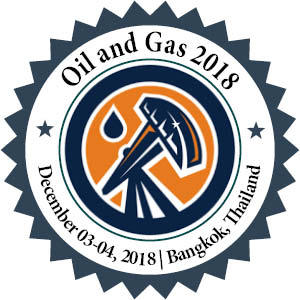
Boyun Guo
University of Louisiana at Lafayette
Title: Investigation of a New Technique for Producing Natural Gas from Seabed Gas Hydrates
Biography
Biography: Boyun Guo
Abstract
A new thermal technique called Moving Riser Method (MRM) was proposed recently for harvesting natural gas from seabed gas hydrates. The objective of this paper is to present the result of a feasibility study of the new technique to serve as a base for decision making and system design. Technical, economical, and environmental issues of the applying the MRM are addressed. The efficiency of harvesting natural gas from seabed gas hydrates using Moving Riser Method depends on the deliverable temperature of hot water injected to the surface of gas hydrate deposit at seafloor. Coupled governing equations for the temperature profiles in the inner pipe and annulus were formulated for countercurrent two-phase fluid flow. The equations were solved analytically to determine the total heat loss and the deliverable temperature of the hot water at the seabed level. The principle of energy balance was used to predict gas production rate. A 3-D heat transfer model was employed to analysis gas leak possibility. The study concludes that with today’s pipe insulation technology water temperature drops only a few degrees from sea surface level to the seafloor level of 800 m deep along an insulated vertical pipe. The injected water at seafloor level will be hot enough to dissociate gas hydrate. Gas production at commercial rate is achievable with affordable gas consumption rates to generate hot water. The level of gas production rate is proportional to the rate at which natural gas is combusted for hot water generation. The gas production to gas combustion ratio (PCR) is greater than 4. The PCR increases slightly with gas combustion rate. Even the gas production ship stays at the same location for over 40 hours, the water-hydrate boundary will still be within 0.9 meter of the hot water injection point. Therefore it is possible to use a gas collector of reasonable size (e.g., 2m in diameter) to gather all dissociate gas from the hydrate deposit. Result of this investigation shows that harvesting natural gas from gas hydrate at seabed with the MRM is technically viable, economically feasible, and environmentally safe. This paper the first time presents a feasibility study to address technical, economical, and environmental issues in applying the Moving Riser Method to harvesting natural gas from gas hydrates on the seafloor. It will help engineers in the petroleum industry in decision making and system design for producing natural gas from gas hydrate deposits at seabed.

